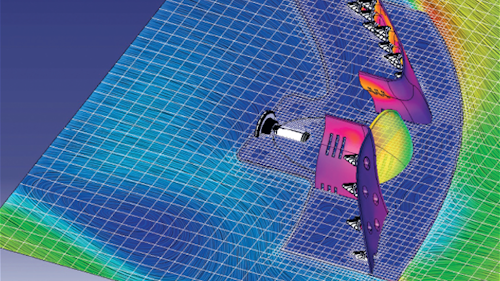Enhancing designs with flow simulation tools
Modern thermal and fluid dynamic simulations enable engineers to create better, higher quality products quickly
Rather than simply evaluating and validating designs, simulation is now used early in the process to predict challenges virtually, commonly called front-loading. Front-loading can help engineers examine and evaluate design options, dismiss less desirable options and improve productivity.
Front-loading flow analysis improves product performance
By front-loading fluid and thermodynamic simulations in the earliest stages of the product development process, you identify product issues earlier, making them much easier to fix. Learn how simulation-guided design decisions give you more flexibility to experiment with numerous design options, predict the effects of different design concepts to find the optimal choice, and result in higher-performance products.
CFD integration with CAD applications
Integration between simulation and CAD applications is critical for simulation-driven design. CAD applications generate 3D models, drawings and other digital representations of physical parts. Any simulation must functionally represent these designs, and any improvements that originate within a simulation should alter the original mechanical design. In this ebook, you’ll learn the three meaningful ways that the best fluid and thermodynamic simulation tools connect to CAD tools.
